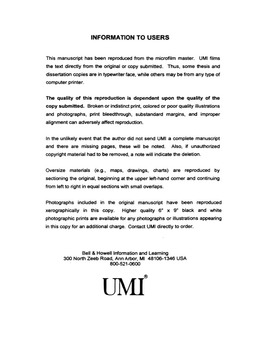| dc.contributor.advisor | Crawford, Kenneth C., | en_US |
| dc.contributor.author | Basara, Jeffrey Brent. | en_US |
| dc.date.accessioned | 2013-08-16T12:18:08Z | |
| dc.date.available | 2013-08-16T12:18:08Z | |
| dc.date.issued | 2001 | en_US |
| dc.identifier.uri | https://hdl.handle.net/11244/283 | |
| dc.description.abstract | This study also investigates the sensitivity of ground heat flux estimates at NORM to naturally occurring variability in soil-water content from field samples as well as instrumentation biases associated with the in situ soil moisture sensors. Results indicate that differences in ground heat flux estimates varied by up 20% due to sampling or instrumentation biases. Furthermore, closure of the surface energy budget varied by up to 8% due to these differences in ground heat flux estimates. | en_US |
| dc.description.abstract | A characteristic of the land surface which modulates the partitioning of available solar energy into fluxes of energy (latent, sensible, and ground heat fluxes) is soil moisture. This partitioning occurs directly through evaporation from bare soil and indirectly through vegetation transpiration. In turn, the surface fluxes of energy contribute to the development of the planetary boundary layer (PBL; the greater the partitioning toward sensible heating, the deeper the boundary layer, and vice versa). In order to simulate properly the development of the PBL using numerical models, accurate and representative values of soil moisture must be obtained. | en_US |
| dc.description.abstract | In April 1999, the Norman Mesonet site (NORM) was upgraded to include sensors to measure latent, sensible, and ground heat fluxes, as well as net radiation. In addition, over 2,000 discrete soil samples were collected within a 20 x 20 m enclosure encompassing the Norman Mesonet site between 1 June 1999 and 15 August 1999. These samples were collected to provide point-scale observations of soil-water content for field calibration of in situ (Campbell Scientific model 229-L) soil moisture sensors installed at NORM and to determine the naturally occurring spatial and temporal variability of soil moisture conditions within the outline of the Norman Mesonet site. | en_US |
| dc.description.abstract | Finally, using the Oregon State University one-dimensional, coupled atmospheric-plant-soil model, PBL conditions were examined at NORM during July 1999. Results indicate that latent and sensible heat fluxes in the model simulations varied by as much as 300 W m-2 due to naturally occurring variability of soil-water content determined from field samples and biases occurring in the in situ measurements. Furthermore, ground heat flux values derived by the model varied as much as 50 W m-2. | en_US |
| dc.description.abstract | One component of this study focuses on the relationship between soil moisture and atmospheric processes at and near NORM using both automated and field samples of hydrologic and atmospheric parameters. The results indicate that, on days with strong radiative forcing and weak shear in the lower troposphere, soil water content in the root-zone was linearly correlated with daily-maximum values of sensible heat flux and latent heat flux. | en_US |
| dc.format.extent | xiii, 225 leaves : | en_US |
| dc.subject | Boundary layer (Meteorology) | en_US |
| dc.subject | Soil moisture Measurement. | en_US |
| dc.subject | Heat. | en_US |
| dc.subject | Physics, Atmospheric Science. | en_US |
| dc.title | The value of point-scale measurements of soil moisture in planetary boundary layer simulations. | en_US |
| dc.type | Thesis | en_US |
| dc.thesis.degree | Ph.D. | en_US |
| dc.thesis.degreeDiscipline | School of Meteorology | en_US |
| dc.note | Adviser: Kenneth C. Crawford. | en_US |
| dc.note | Source: Dissertation Abstracts International, Volume: 62-02, Section: B, page: 0901. | en_US |
| ou.identifier | (UMI)AAI3004876 | en_US |
| ou.group | College of Atmospheric & Geographic Sciences::School of Meteorology | |
